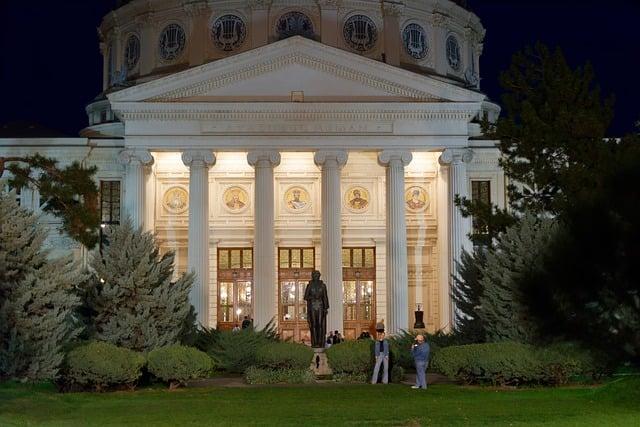In a small village, nestled between snow-capped mountains, the townsfolk gathered each December to light candles in their windows. Each flame represented a week of Advent, a time of waiting and hope. Young Clara, curious about the tradition, asked her grandmother, “What does Advent mean?” Her grandmother smiled, “It’s a journey, dear. A time to reflect on what truly matters—love, peace, and the promise of new beginnings.” As the candles flickered, Clara felt the warmth of anticipation, realizing that Advent was not just about counting days, but about embracing the light within.
Table of Contents
- Understanding the Historical Roots of Advent
- Exploring the Spiritual Significance of the Advent Season
- Practical Ways to Observe Advent in Modern Life
- Embracing Reflection and Anticipation During Advent
- Q&A

Understanding the Historical Roots of Advent
The origins of this sacred season can be traced back to the early Christian church, where it was established as a time of preparation for the celebration of the birth of Jesus Christ. Initially, Advent was observed as a period of fasting and penance, akin to Lent, reflecting the somber anticipation of Christ’s arrival. Over the centuries, the focus shifted from a purely penitential observance to one that embraces hope and joy, symbolizing the light that Christ brings into the world. This transformation highlights the dual nature of Advent: a time of reflection on the past and a hopeful gaze toward the future.
Throughout history, various traditions have emerged to enrich the Advent experience. These include:
- The Advent Wreath: A circular arrangement of greenery with four candles, each representing a week of Advent, symbolizing the light of Christ coming into the world.
- Advent Calendars: A playful way to count down the days until Christmas, often featuring small gifts or scriptures behind each door.
- Liturgical Colors: The use of purple or blue during Advent signifies a time of preparation and expectation, while pink is often used on the third Sunday to represent joy.
These customs not only enhance the spiritual significance of the season but also foster a sense of community and shared anticipation among believers, reminding them of the profound meaning behind the celebration of Christmas.

Exploring the Spiritual Significance of the Advent Season
The Advent season serves as a profound reminder of the anticipation and hope that permeates the Christian faith. It is a time when believers prepare their hearts and minds for the celebration of Christ’s birth, reflecting on the themes of **hope**, **peace**, **joy**, and **love**. This period, spanning four weeks leading up to Christmas, invites individuals to engage in spiritual practices that deepen their connection to the divine. Through **prayer**, **reflection**, and **community**, participants are encouraged to embrace the transformative power of waiting, recognizing that the act of anticipation itself can lead to spiritual growth and renewal.
Moreover, Advent is not merely a countdown to Christmas; it is a journey that encourages introspection and a reevaluation of one’s spiritual life. The use of **Advent calendars** and **wreaths** symbolizes the light that Christ brings into the world, illuminating the darkness of despair and uncertainty. Each candle lit during this season represents a step closer to the celebration of the Nativity, reminding us of the importance of **gratitude** and **generosity**. As we explore the spiritual significance of this sacred time, we are invited to cultivate a sense of **community** and **compassion**, fostering connections that reflect the love and grace that Advent embodies.
Practical Ways to Observe Advent in Modern Life
In the hustle and bustle of modern life, finding time to reflect and prepare for the upcoming Christmas season can be challenging. One practical way to embrace this period is by creating a dedicated space in your home for Advent. This could be a small table adorned with candles, a wreath, or even a simple calendar that marks each day leading up to Christmas. **Lighting a candle each week** can serve as a beautiful reminder of hope, peace, joy, and love, allowing you to pause and reflect on the deeper meanings of the season. Additionally, consider incorporating **daily readings or reflections** that resonate with you, whether from scripture, poetry, or personal journals, to foster a sense of connection and mindfulness throughout the month.
Another meaningful approach is to engage in acts of service or kindness during this time. You might choose to volunteer at a local charity, donate to those in need, or simply reach out to friends and family with messages of encouragement. **Creating a list of intentional acts** can help you stay focused on the spirit of giving and community. Furthermore, consider hosting gatherings that emphasize togetherness, such as a potluck dinner or a game night, where stories and traditions can be shared. By weaving these practices into your daily life, you can cultivate a sense of anticipation and joy that honors the essence of Advent amidst the modern whirlwind.

Embracing Reflection and Anticipation During Advent
As the season of Advent unfolds, it invites us to pause and engage in a journey of introspection. This sacred time encourages us to reflect on our lives, our relationships, and our spiritual paths. It is a moment to consider the **gifts of gratitude**, **forgiveness**, and **hope** that we often overlook in the hustle and bustle of daily life. By embracing this reflective practice, we can cultivate a deeper understanding of ourselves and our connection to the divine. The stillness of Advent serves as a gentle reminder to slow down, breathe, and appreciate the present moment.
Simultaneously, Advent is a season rich with anticipation, a time to look forward to the joy and light that the coming of Christ brings. This duality of reflection and expectation creates a unique space for growth and renewal. As we light each candle on the Advent wreath, we symbolize the increasing light in our lives, illuminating our hopes and dreams. The themes of **peace**, **joy**, and **love** resonate deeply, urging us to prepare our hearts for the transformative power of the season. In this sacred waiting, we find the strength to embrace change and the courage to step into the future with faith and optimism.
Q&A
-
What is Advent?
Advent is a season in the Christian liturgical calendar that marks the period of preparation for the celebration of the birth of Jesus Christ at Christmas. It typically lasts for four weeks, beginning on the fourth Sunday before Christmas Day.
-
What does the word “Advent” mean?
The term “Advent” comes from the Latin word “adventus,” which means “coming” or “arrival.” This reflects the anticipation of both the celebration of Christ’s birth and the expectation of His second coming.
-
How is Advent observed?
Advent is observed through various traditions, including the use of Advent calendars, lighting candles on an Advent wreath, and participating in special church services. Each week often focuses on themes of hope, peace, joy, and love.
-
Why is Advent important?
Advent is important as it serves as a time of reflection, prayer, and preparation for Christians. It encourages believers to pause and consider the significance of Jesus’ birth and the hope He brings to the world.
As we embrace the season of Advent, let us reflect on its deeper meanings—hope, preparation, and anticipation. This sacred time invites us to pause, connect, and prepare our hearts for the joy and light that awaits. Embrace the journey.

大家好,我是彼得潘,專業的手法身體治療師。我喜歡探索和研究各種主題,並透過與人工智慧的合作分享專業、實用、有趣的文章。我們定期進行人工審核,以確保內容的準確性。如果您發現文章中有任何不準確的地方,請隨時與我們聯繫,我們會及時糾正。您可以透過 [email protected] 與我們聯繫。



